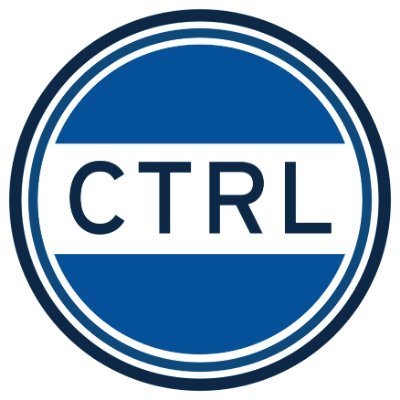Dismantling the Writing and Teaching of the Positionality Statement
By Tiffany Monique Quash, Ph.D.
When I was writing my dissertation, I struggled with finding the “correct” combination of words to write my Positionality Statement. Holmes (2020) states that “[p]ositionality reflects the position that the researcher has chosen to adopt within a given research study.” The author continues by emphasizing the importance of reflexivity, one’s role within and “influence” in research, while simultaneously constructing a Positionality Statement (Holmes, 2020).
The problem was every book or article I read, conference or lecture I attended, and every conversation I engaged in at that point did not embody the essence of what I needed and wanted to write. I could verbally discuss my “why,” but I was not provided the tools, nor had the knowledge to push against the stereotypical white male western perspectives typically outlined for Qualitative Researchers. I was stuck until I met and read Dr. Kakali Bhattacharya’s Fundamentals of Qualitative Research: A Practice Guide.
Meeting Kakali and being honest with my seven committee members (yes, all seven got along) about the current state of my positionality was a pivotal moment in my graduate school experience. These amazing humans taught me about the power of my words. The original statement did not express the importance of my research, nor how I was challenging the narrative that Black Womxn are Collegiate Swimmers. The knowledge I gained from all parties was not in the classroom but through honest conversations with other marginalized womxn and with myself.
These were the top 3 lessons I learned from Kakali and committee members while writing my positionality statement.
Step 1: Be Unapologetic. As researchers, we tend to write and deconstruct language the way we were taught in graduate school. Ask yourself the following questions:
- What would it feel like if you could call your field to action?
- How would your positionality statement in a journal article look different if you had to explain it to someone not in the academy?
Keeping this in mind, say what is in your mind and write it down. Do not attempt to “fix” what you wrote.
Step 2: Be Gentle With Yourself. Hold space for yourself after writing this version of your new statement. Read it a few times and walk away. This is hard work because you are putting your authentic thoughts on paper. When enough time has passed, ask yourself:
- How are you feeling reading your positionality out loud?
- Does the current state of your positionality reflect what you are trying to share with your audience?
It is okay if you must start again! We are all recovering perfectionists and may not get it “right” the first time. Take time for yourself as you are going through this process.
Step 3: YOUR Words Are Your Own. Once you are satisfied with your positionality statement, give yourself a hug (seriously). Writing your authentic truth in research should be a norm in qualitative research. To finalize your positionality, ask yourself:
- Are there other scholars who echo your values? If not… OWN IT!
- Did you say everything you need to say? If not, try it again by speaking truth to power through your written words.
I often reflect on the Qualitative Research courses I took as a doctoral student and how each instructor addressed writing a positionality statement. The similarity among my instructors was that they used the same text and rarely used texts by scholars of color. As we move into another year of teaching and doing research, I encourage you to take a creative and authentic risk in your positionality statement by moving away from the staleness of how we have all been taught within the confined walls of the Ivory Tower. To take it a step further, read and introduce students to marginalized scholars who are not a part of the “traditional” Qualitative Research Methodology Curriculum.
Most importantly, revisit Step 2 (Be Gentle With Yourself) as you trudge through this journey so we can collectively dismantle the current state of positionality statements. If you are wondering how I stated my positionality statement in my dissertation, here is how it finally read:
This study is symbolic of my personal experience as a Black [cisgender] Wom[x1]n Collegiate Swimmer. It is my responsibility as a researcher to acknowledge my aquatic experiences. The importance of this study was reliant upon a personal need to understand the experiences of other Black Wom[x]n Collegiate Swimmers from Historically Black Colleges and Universities and primary white institutions.
Though we all have varying experiences, we can never erase how we identify racially/ethnically. These are the silenced experiences that remain in our field as swimmers, practitioners, and academics. This study represents the stories of and by Black Wom[x]n Collegiate Swimmers, and my bias may be the connecting factor to establish and attempt to understand these phenomenal Wom[x]n. Before my role as a researcher and being engaged with an active non-profit organization, I was a collegiate swimmer and swim coach. I will always be a swimmer.
Author Profile
Tiffany Monique Quash, Ph.D. is the Qualitative/Survey Research Methodologist with the Center for Teaching, Research, & Learning. She is committed to art of qualitative research design and survey research. Dr. Quash delivered a TEDx talk “Learning to Swim is a Human Right” and is an author in the book, “Critical Race Studies in Physical Education”.
Consider the following readings for a more inclusive approach to qualitative research:
Bhattacharya, K. (2017). Fundamentals of qualitative research: A practical guide. Routledge.
Esposito, J., & Evans-Winters, V. (2021). Introduction to intersectional qualitative research. SAGE Publications, Incorporated.
Evans-Winters, V. E. (2019). Black feminism in qualitative inquiry: A mosaic for writing our daughter’s body. Routledge.
Holmes, A. G. D. (2020). Researcher Positionality–A Consideration of Its Influence and Place in Qualitative Research–A New Researcher Guide. Shanlax International Journal of Education, 8(4), 1-10.
Relles, S. R. (2016). A call for qualitative methods in action: Enlisting positionality as an equity tool. Intervention in School and Clinic, 51(5), 312-317.
Savin-Baden, M. and Major, H. C. Qualitative Research: The Essential Guide to Theory and Practice, Routledge, 2013.



